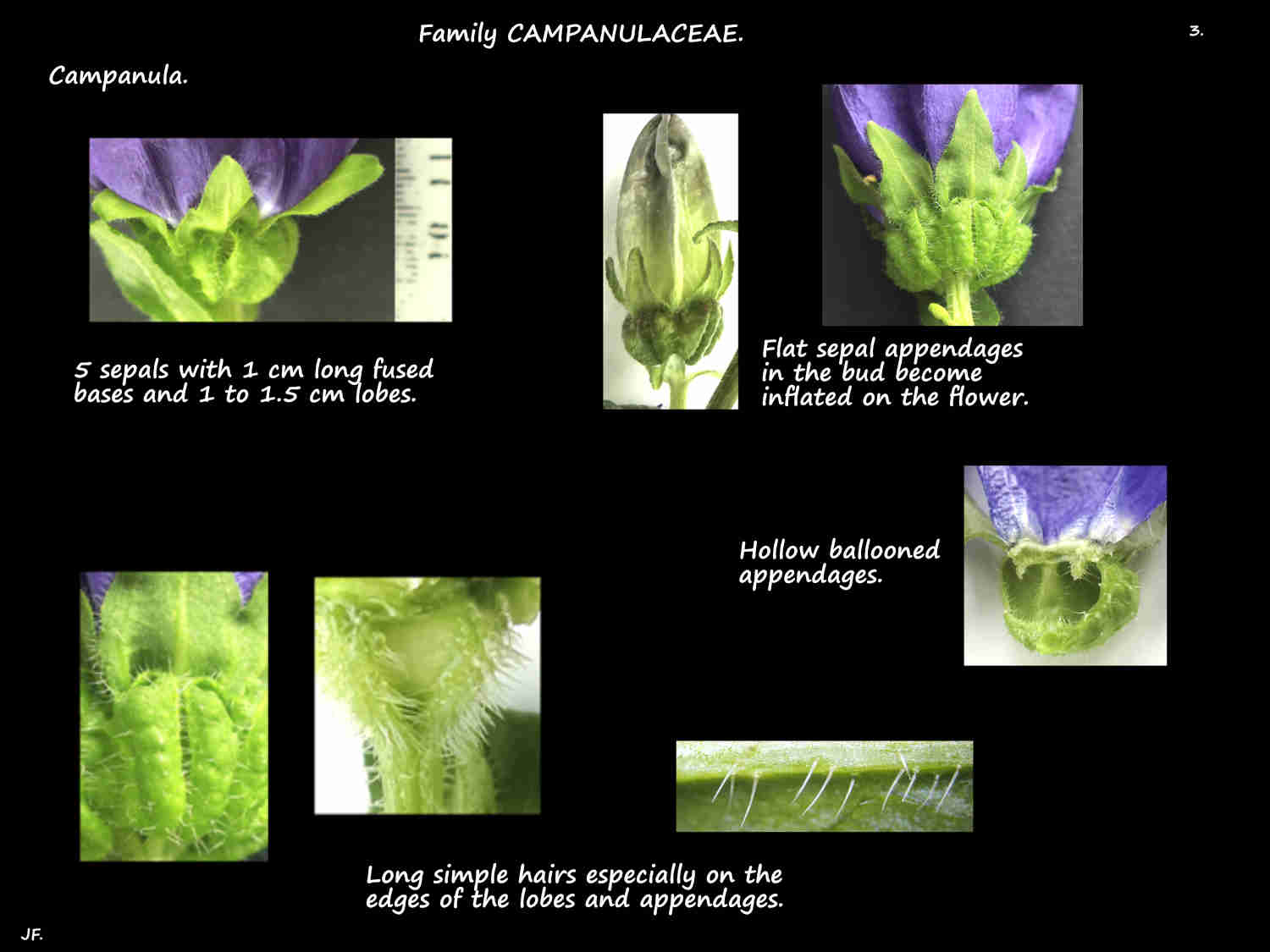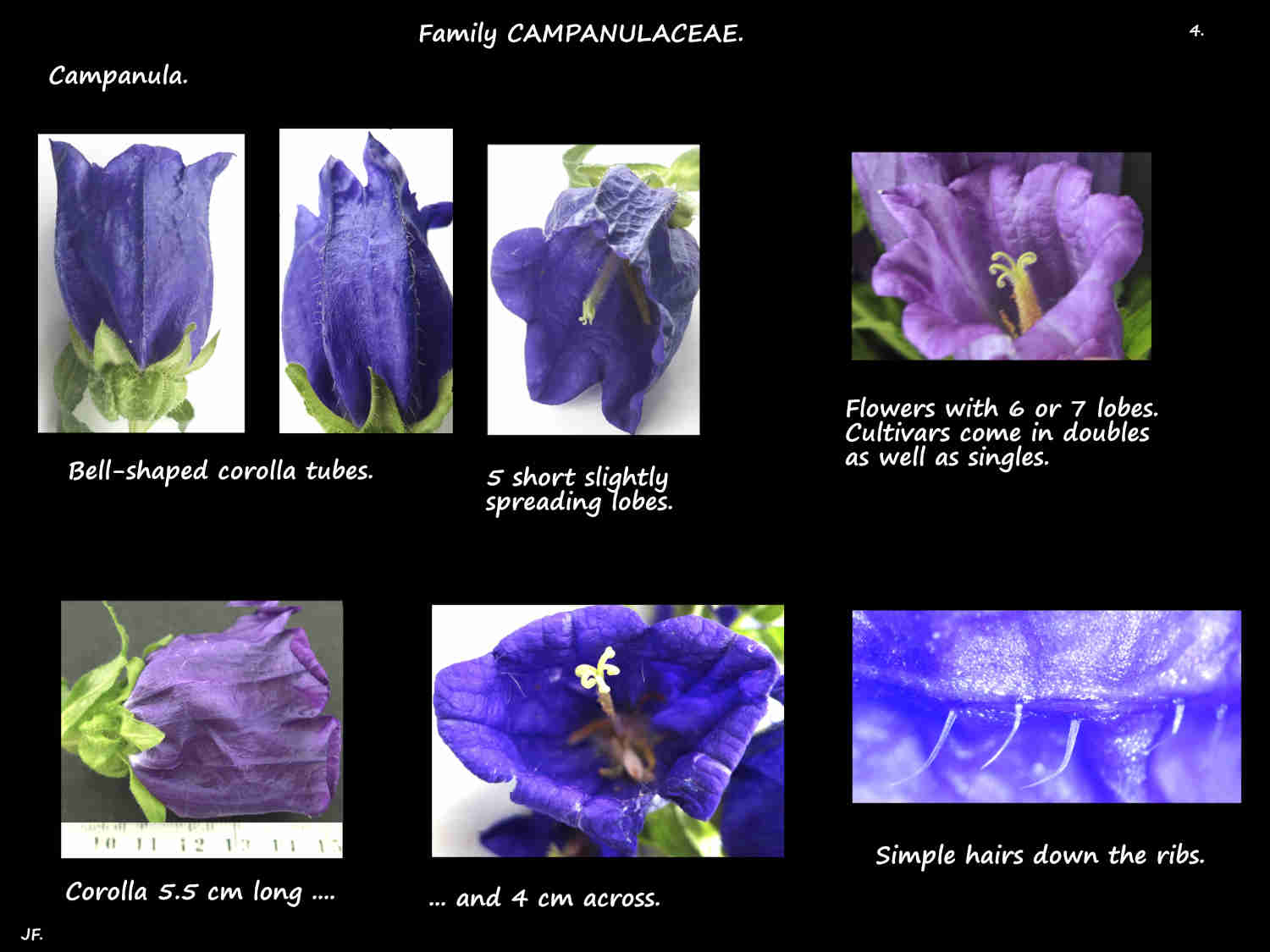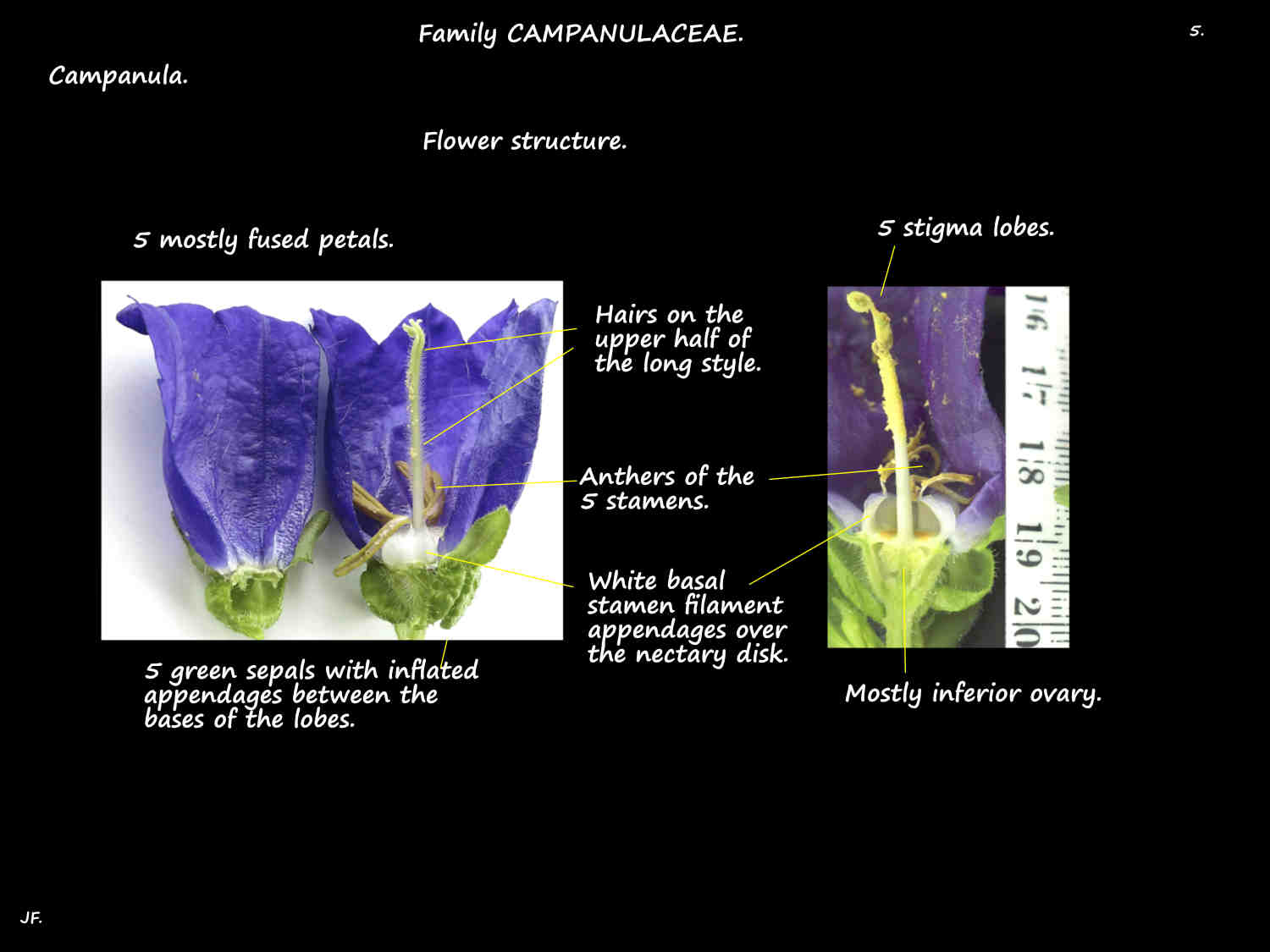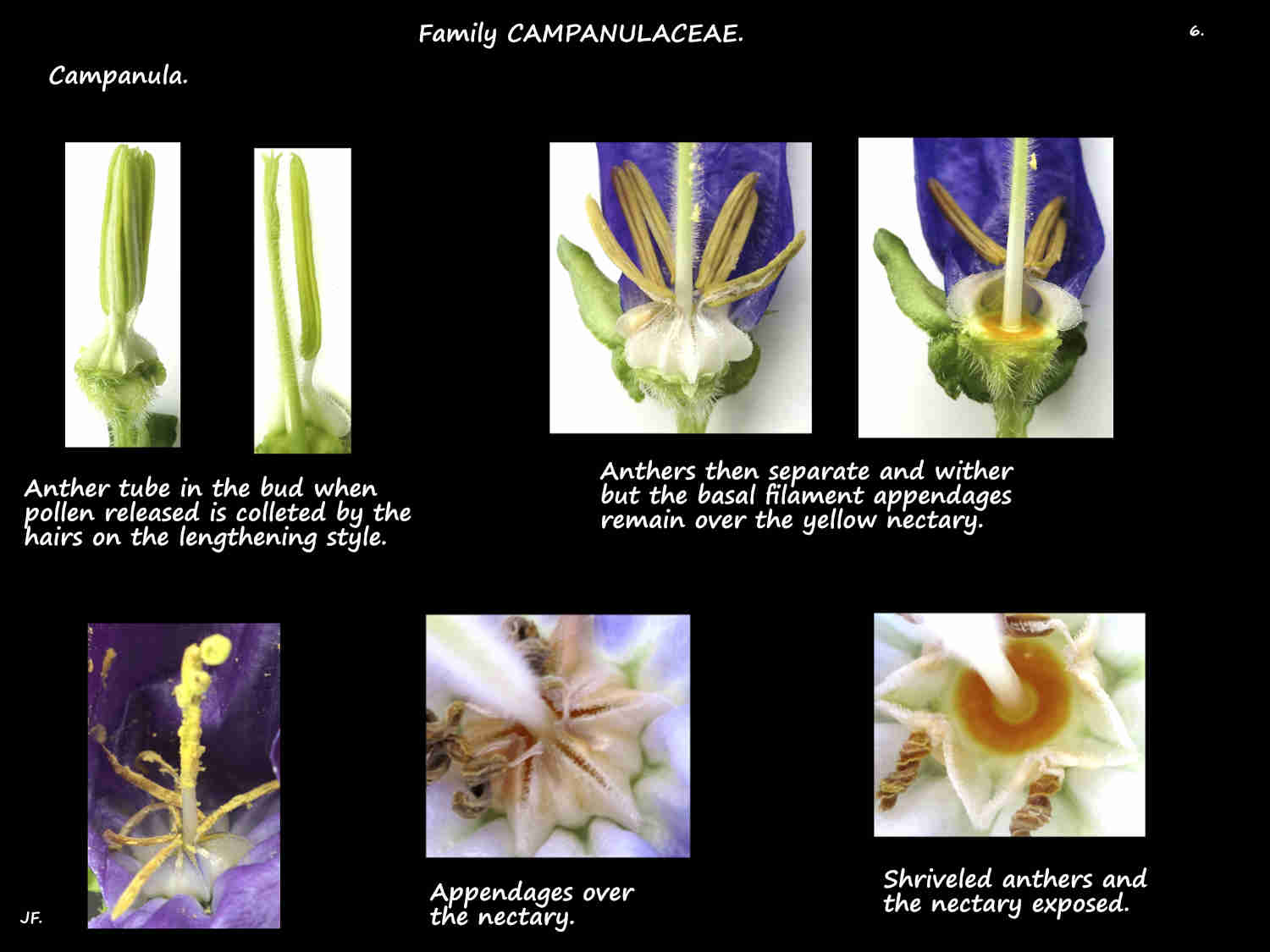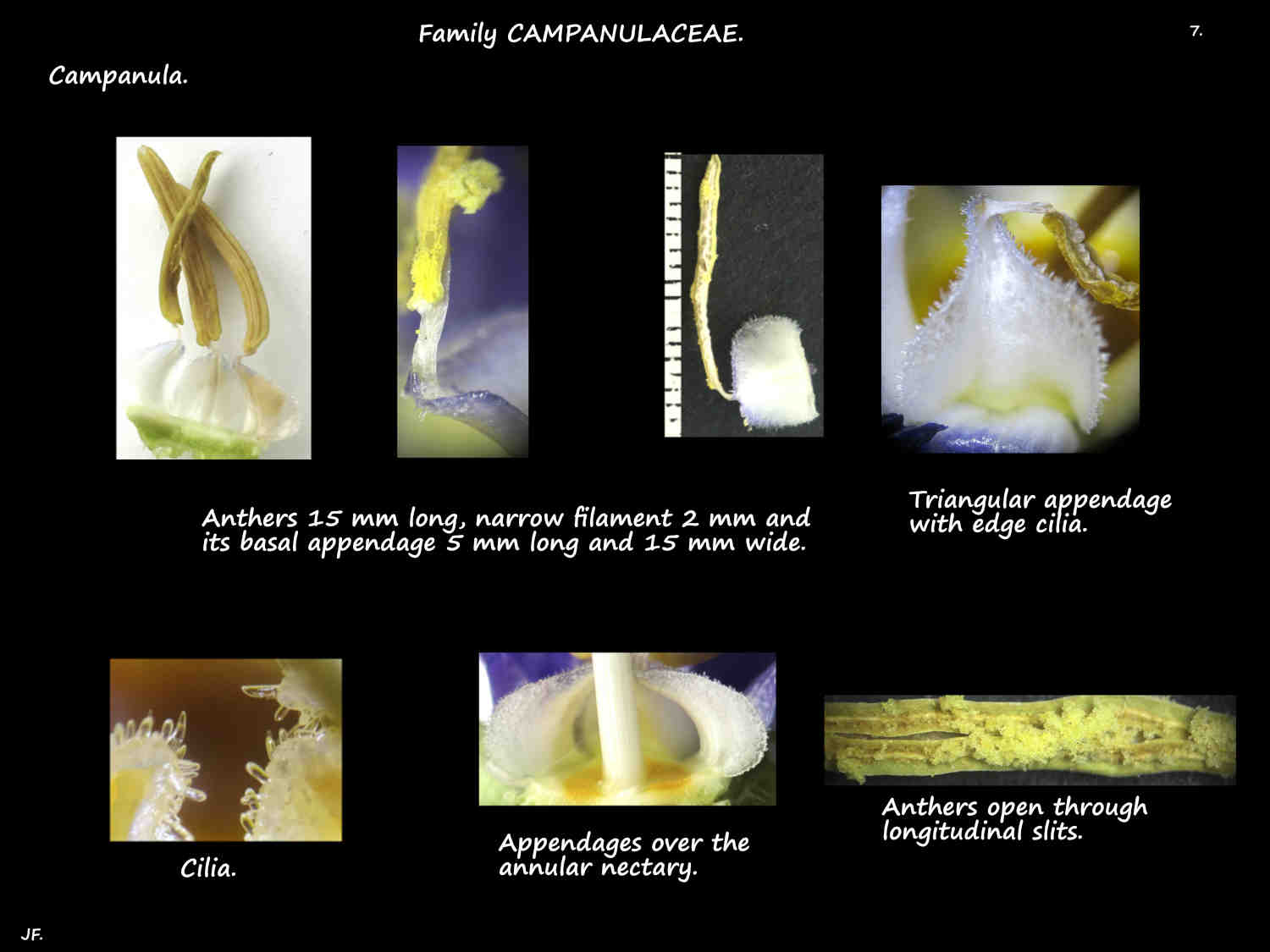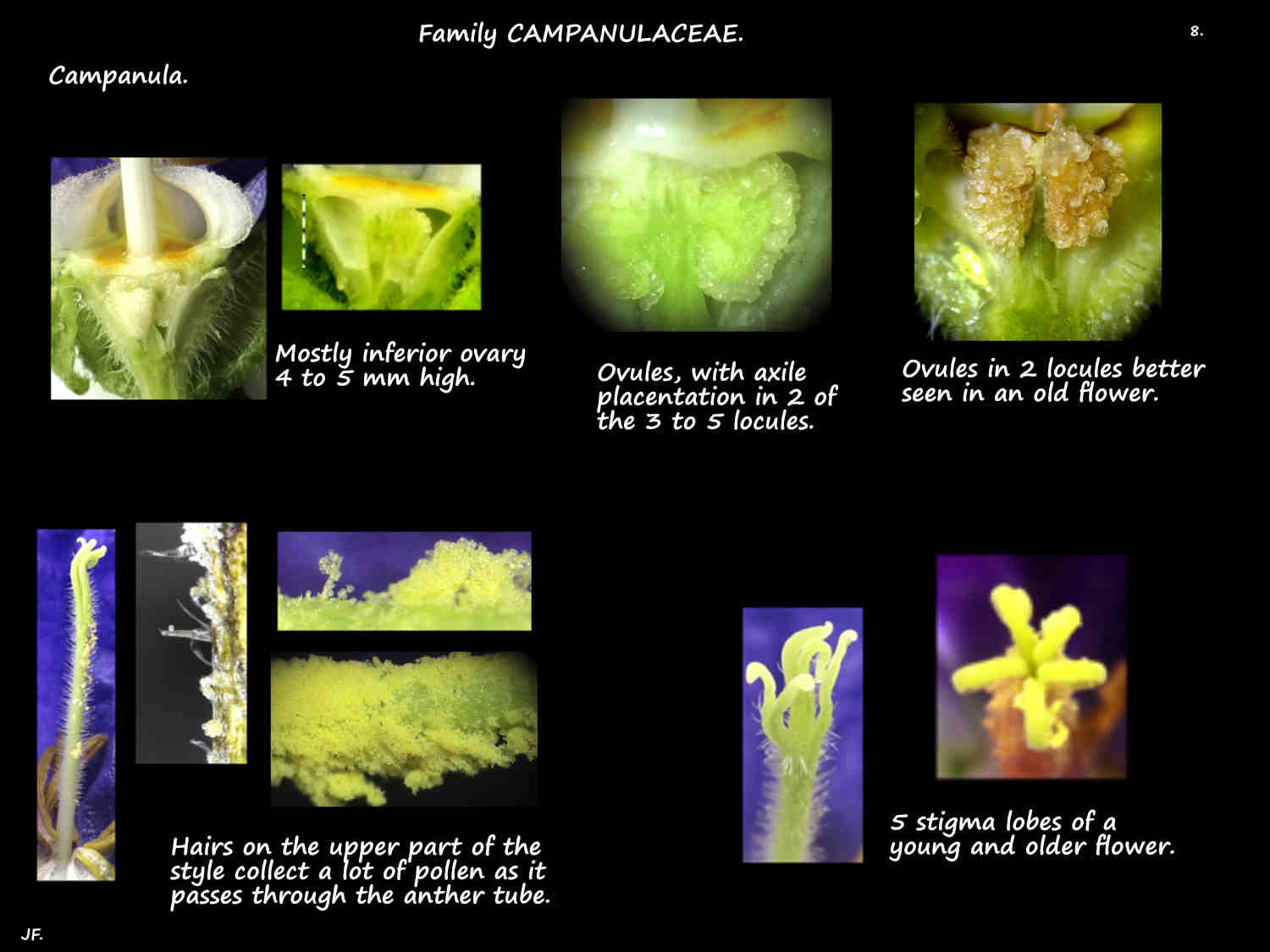Campanula.
Bellflowers are in Family Campanulaceae > Subfamily Campanuloideae.
Plants of the World Online (Kew) recognises 449 species found worldwide.
Even within a species the plants can be variable.
They are annual to perennial herbs with a few subshrubs.
Ground covers can be as low as 5 cm and some spread laterally up to 60 cm.
Erect forms, with single or branched stems can be up to 1.5 m high.
Stems usually have simple hairs and stems and leaves commonly contain a white latex.
The alternately arranged leaves vary in size and shape even on one plant.
There may be large basal leaves with a long or short petiole and smaller differently shaped upper or cauline
leaves with no petiole. Blades can be simple, ovate, round and heart, lance or spoon-shaped.
The sometimes wavy leaf edges can be smooth or toothed.
Simple hairs on young leaves mostly disappear on older ones.
Inflorescences can be terminal or axillary.
Some are a solitary flower, others a spike, a branched cluster (panicle) or dense like a head.
Erect or pendant flowers, up to 8 cm long may or may not have a short stalk (pedicel).
There are simple hairs on many parts of the inflorescence.
The bases of the 5 sepals are usually fused to the part-inferior ovary.
The 5 sepal lobes can be longer or shorter than the tube.
There may be an appendage, of variable shape and size between the bases of the lobes.
The corolla, up to 5 cm across has a tubular base and 5 lobes.
The tube may be very short with the longer lobes spreading outwards like a star.
Many have a long bell or funnel-shaped tube with smaller lobes.
Most species have blue to purple petals but there are some with pink or white.
A few species have cream or yellow petals or blue with white.
There are 5 free stamens inserted at the base of the corolla tube.
The filaments have a wide base with short cilia on the edges.
Anthers, forming a tube, open in the bud releasing pollen onto the hairs on the upper part of the style which
continues to grow past the anthers.
Anthers then shrivel up but the filament bases remains over the nectary disk.
The part-inferior ovary has 3 to 5 locules each with numerous ovules.
The single style has 3 to 5 stigma lobes that lie in or past the corolla tube.
The fruit are a small capsule with 3 to 5 chambers and usually persistent calyx lobes.
Each chamber opens outwards through a pore or slit at the top, centre or base depending on the orientation of the flower.
The numerous small seeds are brown or yellowish.
There are numerous cultivars used in the garden or as cut flowers.
They come in singles and doubles and shades of blue, purple, mauve, lilac, pink as well as white.
Gardening Australia’s ‘Flora’ lists 33 exotic species seen here including some sold as ‘Canterbury Bells’
which is actually Campanula medium. All species have some cultivars and hybrids.
J.F.



